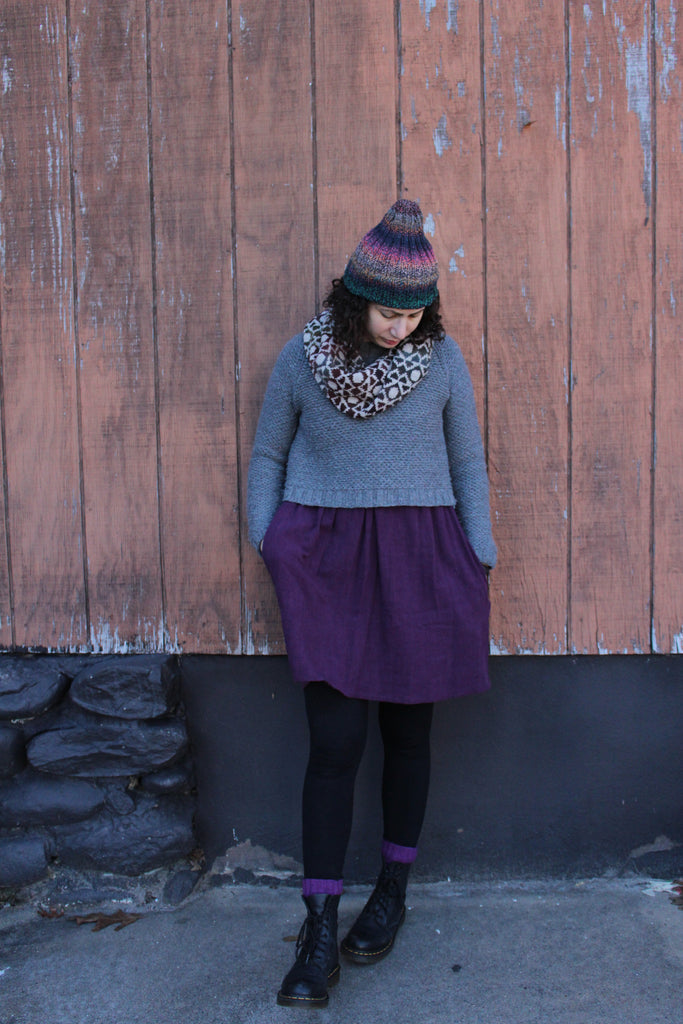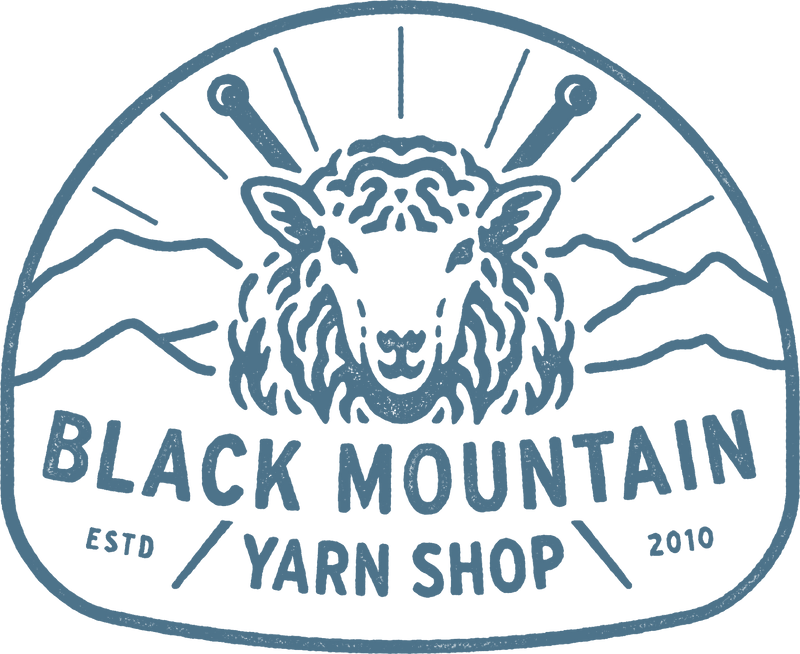Building a Capsule Wardrobe

written by Maggie Kent
Many of us have heard the phrase “capsule wardrobe” before, especially in recent years as the issues with fast fashion and over-consumption become more apparent. Essentially, a capsule wardrobe is a small collection of clothing that consists of simple pieces which can all be worn together and are unlikely to go out of style. These items of clothing should allow you to create a variety of outfits without having to purchase new items. They typically consist of neutral colors so that the items can be combined easily.
I first became interested in having a capsule wardrobe when I learned more about textile sustainability and found myself struggling to pick out what to wear in the morning, despite having a plethora of clothes. While I’ve never been particularly inclined to buy directly from fast fashion brands, I often found myself buying secondhand fast fashion items. I would quickly become dissatisfied with these purchases and donate them once again. This endless cycle of clothing, none of which were of good quality or fit particularly well, had me feeling hopeless and exhausted about buying clothes.
Working to create a capsule wardrobe can help solve a lot of these issues. Slowly taking the time to pick out (or make) quality pieces that fit your personal style goes a long way in reducing fashion waste while increasing the enjoyment you get from your clothing. I wouldn’t say that I’ve created the perfect capsule wardrobe by any means, and everyone’s wardrobe will look completely different, but I’ll do my best to give some helpful tips to starting your own capsule collection. Keep in mind that there’s no need to go out and buy your entire new wardrobe all in one day; this is a process that will take time and will involve self-control.
Save up
First, I recommend buying less clothing. This might sound overly simple and even counter-intuitive, but building a capsule wardrobe that consists of high-quality, sustainable, and ethically made items will be expensive, and if you’re anything like me, you’ll need to save up money for each carefully-selected piece. This also goes for clothing you would like to make yourself. A sweater's quantity of yarn can be expensive and making a sweater is a commitment. You can start by simply not impulse buying any clothing that you didn’t really need but just felt like you wanted. It can help to create a list of how much you spend on non-essentials every month and then you will be able to take a more accurate look at the places where you can cut back.
Figure out your faves
Now that you’ve saved some money for your first piece, you’re ready to actually start thinking about your personal style and your favorite colors, cuts, and fabrics. Write down, or make a mood board on Pinterest, the things that you just can’t wait to wear. Use the questions below if you need some help getting started.
- What materials feel the best on your skin? I recommend sticking with natural fibers if possible, and buying things made from wool, organic cotton, linen, alpaca, hemp, etc… Personally, I find myself gravitating towards wool and linen the most.
- What kind of cuts do you find the most flattering? Do you prefer v-necks or turtlenecks? Bootcut or skinny jeans? High rise or low rise? More coverage or less? All of these questions will help narrow down your perfect fit.
- What colors, or more broadly, tones/temperatures, do you love that you find flatter your skin tone? Do you prefer cool or warm tones, pastels, or brights? This won’t necessarily be your favorite color. For example, red is one of my favorite colors, but when I buy clothing, I tend to gravitate toward deep teals and greens.
- What items in your closet are always dirty, or, what do you wear the most? When you just do your laundry, which outfit do you put on first? Take a look at the pieces you wear the most and figure out what you love so much about them. This will help you when you go shopping for something new.
Take a long, hard look at your clothes
Next, you’re going to want to go through all the clothing you currently own. When doing this, I like to take everything out one at a time and ask myself:
- What do I like about this?
- What do I dislike?
- How often do I reach for this item?
Depending on how you answer these questions, you can put the item in one of three categories, Keep, Maybe, or Get Rid Of. The items you keep should be things you love to wear and wear often. They should flatter your body and make you feel good when you put them on. The items in “Maybe” should be things you wear occasionally, but aren’t the first things you grab from your closet. Maybe you like the color, but not the cut, or vice versa. The items you get rid of should be the last you reach for or things you never wear. Maybe this is a pair of jeans that no longer fit you or other items you’ve been keeping “just in case”. Donate these items, or do a clothing exchange with some friends to give them a second life.
Shop! But do it responsibly
Finally, the step you’ve probably been waiting for. But remember, this isn’t a shopping spree where you buy 20 or more pieces in one go. The items you buy will cost more, but they will last longer, perhaps even a lifetime. Choose brands that make ethical sourcing a top priority and are open about their supply chain. Choose natural fibers wherever possible and brands that are passionate about sustainability. This applies to yarn as well! When you spend so much time making a garment that you’ll probably have forever, it makes sense to use high-quality materials. I prefer non-superwash wool yarn that’s made in the United States for this reason. Try your best to find items that will work for multiple seasons, that won’t go out of style with changing trends. Keep in mind that you’re looking for clothing that you may have for the rest of your life, take your time and do it right!
Shopping can also apply to picking out new patterns. Look through your Ravelry que and think about the patterns in relation to your style preferences. Weed out any that don't align with what you love to wear, and move your favorites to the top.
If you're looking at adding to your capsule with hand-sewn pieces, Sew Liberated has some great courses for sewists of all levels. The Mindful Wardrobe Course focuses on helping you create a sustainable closet that is perfectly tailored to your needs and style.
Need More Inspiration?
Here are some outfits that we’ve put together that we always reach for, complete with our favorite hand-knits, hand-sewn pieces, and store-bought finds. We’ve also included some great patterns that should complement any capsule wardrobe.
Danni:

Outfit 1: Ace & Jig Jumpsuit, Gaptastic Cowl, black long sleeve shirt, and leather slides.

Outfit 2: Madewell pants, Lopi love sweater, and Blundstones.

Outfit 3: Nurtured Sweater, Homespun Hat, Kilim Cowl, Hinterland Dress (pattern by Sew Liberated), Intersections socks, combat boots, and leggings.
Favorite Patterns:
- The Weekender by Andrea Mowry
- Birch Pullover by Andrea Mowry
- Oversized Seasons Cardigan by Ozetta
Maggie:

Outfit 1: Madewell jeans, thrifted black tee, button up from Rite of Passage, boots from Blundstone.

Outfit 2: Thrifted Jeans, Maple sweater (coming April 2023) Blundstones.

Outfit 3: Be Thankful cardigan, bandana from Frae Handmade, light wash jeans, long sleeve shirt.
Favorite Patterns:
- Maple Sweater by Maggie Kent
- Salty Sweater by Caidree
- Homespun Hat by Maggie Kent
